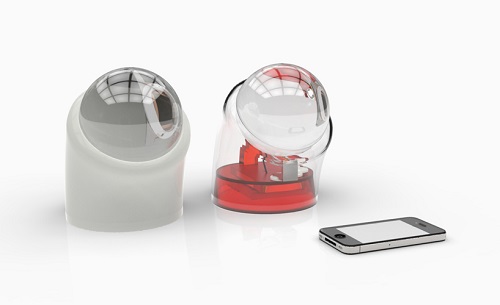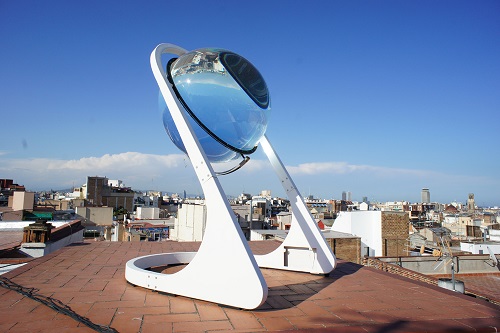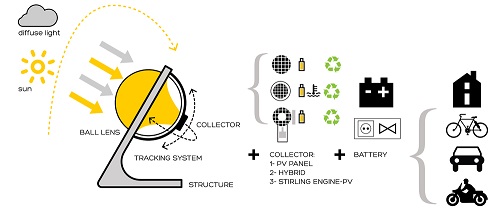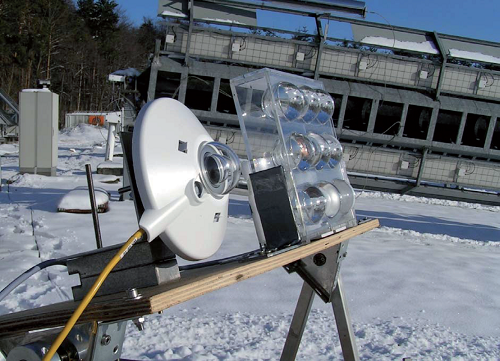
I mage of the Beta.ey S phone charger via IndieGoGo.
German designer Andre Broessel has invented a means ofharnessing the sun’s energy in a solar cell. Through the startup RawLemon, Broessel wants to prove that we can store the sun’s energy in large water-filled glass spheres that can be installed in skyscrapers’ curtain walls and power stations on desks. RawLemon worked on developing crystal globes that can take sunlight or moonlight and transfer it onto a miniscule photovoltaic cell and provide power.
All RawLemon devices will have a dual-motion tracking system to ensure that the sun’s power is directed toward the cell for the whole day. RawLemon wants to eventually present this solar solution to countries where electricity is either unavailable or where power is a rare commodity.

RawLemon's prototype for a large-scale solar power generator.

An outline of RawLemon's overall concept.
By trade, Broessel is an architect. He was inspired to create this solar project while working on designing a building at his kitchen table. During breakfast one morning, he spotted his daughter placing marbles into an egg cup. This reminded Broessel of the Campbell-Stokes Sunlight Recorder, an astronomical tool popularized in the 1850s that recorded the amount of sunlight in an area at a given time. The Sunlight Recorder was focused through a ball lens that burned traces into a piece of paper. This data was gathered and analyzed. Broessel thought that if he could apply this concentrated energy to a solar cell, energy could then be quantifiably transferred, and larger gains could sustainably be used in smaller places.
There are different versions planned for the line of RawLemon Beta.ey products. The Beta.ey S (the solar cell phone charger) has an acrylic-polymer lens with 1.6 W with multijunction capabilities and a battery capacity of 27.5 Whr. The solar smartphone charger costs $149, complete with a tiny multijunction solar cell. Beta.ey S can charge your phone one and a half times per day. There is a 2.0 USB connection, 1 color LED, and a dual axis tracking low inertia DC Microdrive that enable phone charging. The aperture of the lens is 100 mm. The other, more-intricate versions that RawLemon offers include the Beta.ey S special edition, Beta.ey XL , Beta.ray 1.0 , and the Beta.ray 1.8 .

In an interview with Wired, Broessel stated that “compared to the maximum theoretical efficiency ceiling of a silicon cell of 33.7%, the concentrator multijunction cell has already reached 43% efficiency of its theoretical limit of 86% and this is expected to improve through further research.”
So far, this method has not been proven to be 100% effective. RawLemon has yet to publish any scientific data regarding this research. On RawLemon’s website, Broessel directs the reader to demonstrative YouTube videos or diagrams.
RawLemon is collecting funds on IndieGoGo until February 8 to reach its goal of $120,000.
Advertisement
Learn more about Electronic Products Magazine





